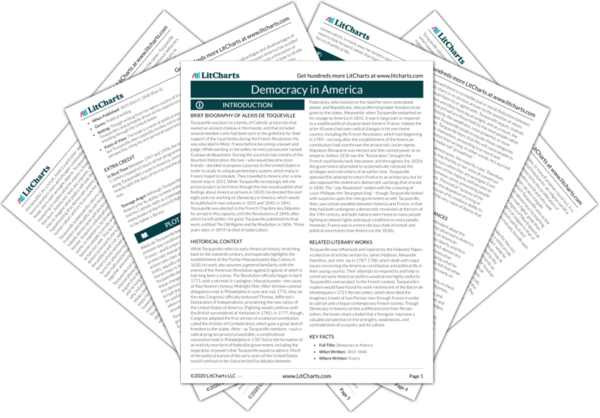An American bookstore, begins, is packed with basic textbooks written in Europe, religious works and charitable reports, and finally political pamphlets, which are often preferred to books. He argues that there are a small number of admirable American authors that Europeans should pay attention to. In addition, most important English books are printed in the United States, and Tocqueville recalls having first read Shakespeare’s
Henry V in a log-house in the American woods. American writers tend to transport the literary trends and ideas from England into their own writing, rather than representing their land as it actually is (and are therefore not very popular in America).
